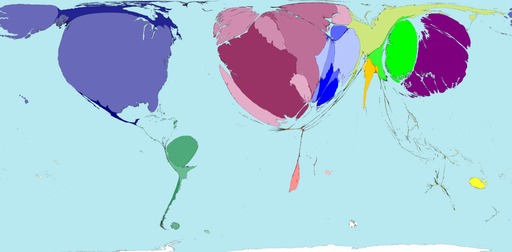David Fleming’s New Book Provides Death Knell for Nuclear Power.
Rob Hopkins
David Fleming, creator of the concept of Tradeable Energy Quotas and author of the forthcoming and rather wonderful “Lean Logic”, has just published The Lean Guide to Nuclear Energy, which is a thorough demolition of the case for nuclear power being a solution to peak oil. and climate change. You can down load the pdf. for free here or you can order printed copies here. Like much of David’s writing, it patiently yet assertively builds its arguments, backed up by exhaustive research, to build a case against nuclear power that looks pretty much bulletproof to me. The report’s key findings are;
(7 December 2007)
Rob Hopkins
David Fleming, creator of the concept of Tradeable Energy Quotas and author of the forthcoming and rather wonderful “Lean Logic”, has just published The Lean Guide to Nuclear Energy, which is a thorough demolition of the case for nuclear power being a solution to peak oil. and climate change. You can down load the pdf. for free here or you can order printed copies here. Like much of David’s writing, it patiently yet assertively builds its arguments, backed up by exhaustive research, to build a case against nuclear power that looks pretty much bulletproof to me. The report’s key findings are;
- The world’s endowment of uranium ore is now so depleted that the nuclear industry will never, from its own resources, be able to generate the energy it needs to clear up its own backlog of waste.
- It is essential that the waste should be made safe and placed in permanent storage. High-level wastes, in their temporary storage facilities, have to be managed and kept cool to prevent fire and leaks which would otherwise contaminate large areas.
- Shortages of uranium – and the lack of realistic alternatives – leading to interruptions in supply, can be expected to start in the middle years of the decade 2010-2019, and to deepen thereafter.
- The task of disposing finally of the waste could not, therefore, now be completed using only energy generated by the nuclear industry, even if the whole of the industry’s output were to be devoted to it. In order to deal with its waste, the industry will need to be a major net user of energy, almost all of it from fossil fuels.
- Every stage in the nuclear process, except fission, produces carbon dioxide. As the richest ores are used up, emissions will rise.
- Uranium enrichment uses large volumes of uranium hexafluoride, a halogenated compound (HC). Other HCs are also used in the nuclear life-cycle. HCs are greenhouse gases with global warming potentials ranging up to 10,000 times that of carbon dioxide.
- An independent audit should now review these findings. The quality of available data is poor, and totally inadequate in relation to the importance of the nuclear question. The audit should set out an energy-budget which establishes how much energy will be needed to make all nuclear waste safe, and where it will come from. It should also supply a briefing on the consequences of the worldwide waste backlog being abandoned untreated.
- There is no single solution to the coming energy gap. What is needed is a speedy programme of Lean Energy, comprising: (1) energy conservation and efficiency; (2) structural change in patterns of energy-use and land-use; and (3) renewable energy; all within (4) a framework for managing the energy descent, such as Tradable Energy Quotas (TEQs).
(7 December 2007)
 Still, the guy ain't stupid, not by a long chalk.
Still, the guy ain't stupid, not by a long chalk.

Comment